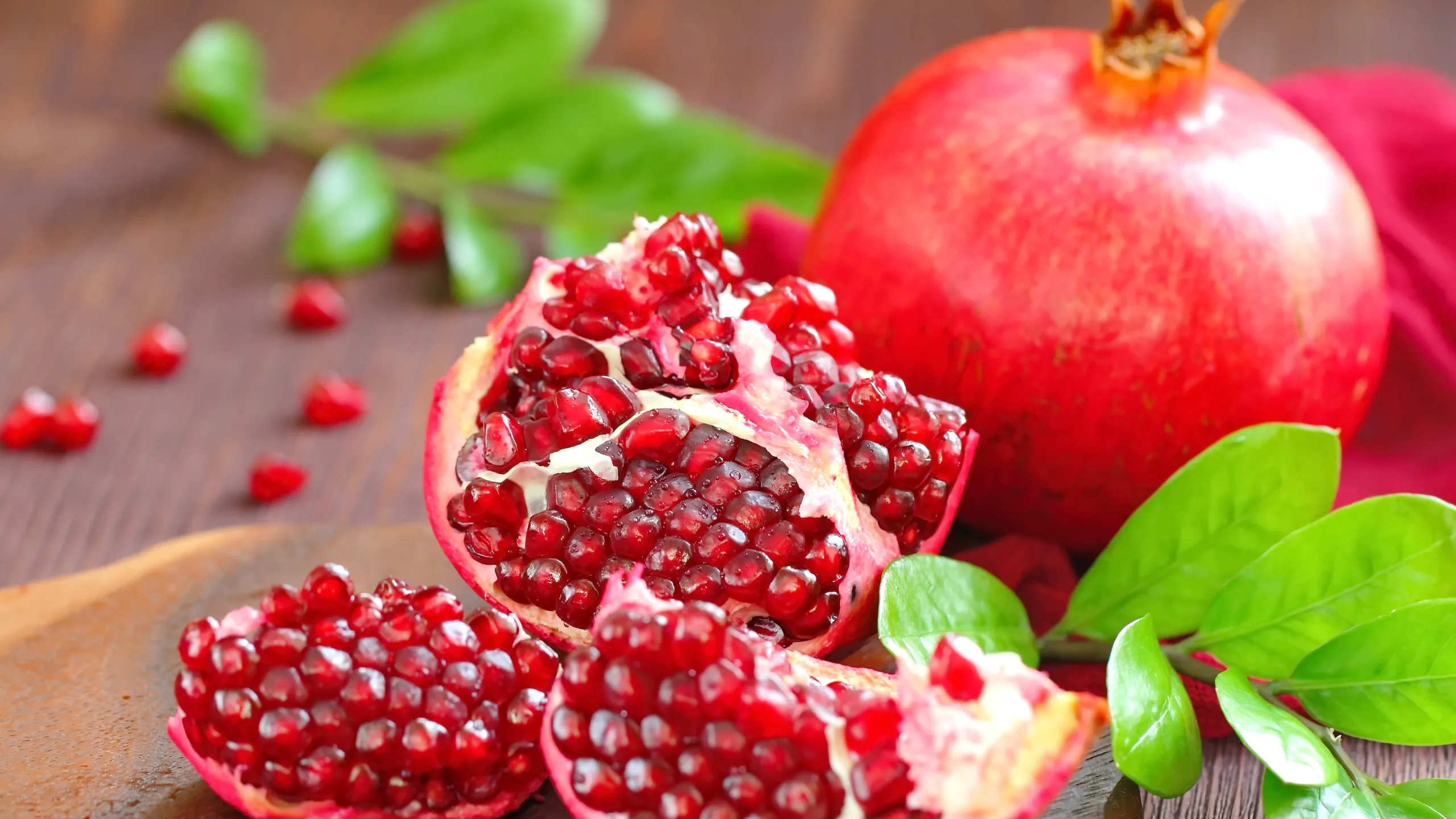
Anartwak (Punica granatum), commonly known as Pomegranate, is a deciduous shrub or small tree native to the region of Iran to northern India and cultivated throughout the Mediterranean, Middle East, and India. In Ayurveda, the bark of the pomegranate tree (referred to as Anartwak) is highly valued for its astringent, anthelmintic, and digestive properties. It is primarily used in the treatment of diarrhea, dysentery, intestinal worms, and bleeding disorders.
Pomegranate Scientific Name
- Kingdom: Plantae
- Phylum: Angiosperms
- Class: Eudicots
- Order: Myrtales
- Family: Lythraceae
- Genus: Punica
- Species: Punica granatum
Pomegranate Common Name
- English: Pomegranate
- Sanskrit: Dadima, Anartwak (for bark)
- Hindi: Anar
- Gujarati: Dalim
- Marathi: Dalimb
- Tamil: Mathulai
- Telugu: Danimma
- Malayalam: Mathalam
Daily Routine & Home Uses of Pomegranate (Anartwak)
Pomegranate (Anartwak / Punica granatum) has always been part of everyday Indian wellness, not just because of its taste but because Ayurveda considers it a gentle, balancing fruit suitable for all ages. Below are simple, practical and home-friendly ways people naturally use pomegranate in their daily routine.
1. Daily Routine Uses (Simple Everyday Habits)
- Fresh pomegranate seeds in the morning
Most people prefer eating a small bowl of fresh arils early in the day. It helps the stomach settle, supports hydration and provides steady energy. Ayurveda suggests it for improving digestion without heating the body.
- A glass of fresh pomegranate juice
Fresh juice — not packaged — is widely used for heart health and immunity. Women often take it regularly for maintaining haemoglobin and reducing fatigue. It’s a light, refreshing drink that fits easily into a morning routine.
- Peel-infused overnight water
A traditional home practice is soaking the peel overnight and drinking the water the next morning. Families use it to ease acidity, reduce bloating and support a cleaner, calmer gut.
2. Home & Beauty Uses (Natural Skin Care)
- Pomegranate peel face pack
The dried peel is rich in polyphenols. When powdered and mixed with rose water, it becomes a simple face mask that helps brighten dull skin and calm breakouts. Many people prefer it because it’s chemical-free and gentle.
- Decoction toner for everyday freshness
Boiled peel water, once cooled, works surprisingly well as a toner. It tightens pores and refreshes the skin without any harsh ingredients.
3. Hair & Scalp Uses (Easy, At-Home Remedies)
People often boil the peels and use the cooled water as a final rinse after shampooing. It helps reduce dandruff, soothe itchiness and add mild shine to the hair.
- Coconut oil + peel powder pack
Mixing peel powder with coconut oil creates a natural scalp pack. This helps strengthen the roots and can reduce occasional hair fall caused by weather or stress.
4. Cooking & Household Uses (Simple, Handy Uses at Home)
- Anardana for flavour and digestion
Dried pomegranate seeds are widely used in home cooking. They add a slight tang to sabzis, dals and snacks while also helping digestion — which is why they are common in North Indian kitchens.
Boiling pomegranate peels fills the home with a mild, clean fragrance. It’s a natural alternative to store-bought room fresheners.
- Peel-water spray for ants
Peel-soaked water is often used in corners of the house to keep ants away. It is safe, easy and avoids chemical sprays.
Traditional Ayurvedic Uses of (Anartwak)Pomegranate
- Digestive Health - Acts as a grahi (absorbent) to treat diarrhea and dysentery.
- Anthelmintic Activity - Effective in expelling intestinal worms, especially tapeworms.
- Hemostatic and Astringent - Stops internal bleeding such as bleeding gums, piles, or menorrhagia.
- Oral Health - Used in gargles to treat sore throat, mouth ulcers, and gingivitis.
- Cardio-Protective and Antioxidant - Contains polyphenols which help reduce oxidative stress and support heart health.
Phytochemical Constituents
The bark and other parts of Punica granatum are rich in various bioactive compounds, including:
- Tannins: Punicalagin, Punicalin, Gallagic acid
- Alkaloids: Pelletierine, Isopelletierine (especially in bark)
- Flavonoids: Quercetin, Kaempferol
- Ellagic acid and other polyphenolic compounds
- Gallic acid, Catechins, and Anthocyanins
References
Ayurvedic Pharmacopoeia of India (API), Part-I, Vol-III. Government of India, Ministry of AYUSH.
Sharangdhar Samhita, Chapter: Atisaar Chikitsa (Treatment of Diarrhea).
Jurenka, J. (2008). "Therapeutic applications of pomegranate (Punica granatum): A review." Alternative Medicine Review, 13(2), 128-144.
Lansky, E.P., & Newman, R.A. (2007). "Punica granatum (pomegranate) and its potential for prevention and treatment of inflammation and cancer." Journal of Ethnopharmacology, 109(2), 177–206.
European Medicines Agency. (2014). "Community herbal monograph on Punica granatum L., cortex."
Chopra, R.N., Nayar, S.L., & Chopra, I.C. (1956). Glossary of Indian Medicinal Plants. CSIR, New Delhi.
Indian Materia Medica – K.M. Nadkarni, Vol I & II.
Classical Ayurveda texts describe Dadima as Hridya (supporting heart function) and Ruchikrut (improving appetite). It is also mentioned for helping with Atisara (loose motions) and for supporting healthy blood. Because it is cooling, nourishing and easy to digest, Ayurveda considers pomegranate one of the safest fruits for all age groups.





 My Account
My Account